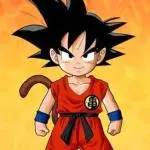
There are some iconic films that have been classics since their release, and their significance to the film industry has been sublimated in countless interpretations for decades. These films have influenced the whole film culture.
Akira Kurosawa's Rashomon is one of the classic movies that have to be mentioned.

▲Rashomon
Akira Kurosawa gave birth to a term used both inside and outside the film- "Rashomon Effect".
So what is "Rashomon Effect"?
01
Definition of "Rashomon Effect"
The Rashomon Effect is a term meaning that an event can be described in many ways by different people. The term was coined by the famous filmmaker Akira Kurosawa after he first used the storytelling technique in the film Rashomon (1950).
Since then, this theory has influenced countless movies in history. It has even gone beyond the field of film and become a term commonly used in psychology and law.
The following are movies about the "Rashomon Effect":
Legal Hero (2001)
Elephant (2003)
Gone Girl (2014)
Vantage Point (2008)
The Usual Suspects(1995)

02
The Origin of "Rashomon Effect"
In 1951, Rashomon won the Golden Lion Award at the Venice Film Festival. At that time, Akira Kurosawa's bold attempt was groundbreaking in the film industry.
So how has the story of Rashomon influenced so many filmmakers?

At the beginning of the film, there are three men, a wandering monk, a woodcutter and a beggar. They take shelter from the rain under the Rashomon in Kyoto and chat about how the woodcutter found the body of a samurai in the forest three days ago.
At this time, a robber is accused of murdering the samurai and raping his wife. The woodcutter, the monk (who had seen the samurai and his wife before the murder), the samurai's wife, the robber, and even the samurai's ghost are all summoned for trial.
However, each version from different narrators of the event is different and contradictory. The ending of the film is also ambiguous, and there is no clear explanation of the truth.
It is not only because of its fascinating story, but also because it explores the common contradiction of human beings-the contradiction between the pursuit of truth and the vanity of facing oneself, which promotes the desire to lie.
03
How does the "Rashomon Effect" influence the story?
Rashomon's impact on the film industry is difficult to quantify, as its ideas and techniques have changed the way filmmakers approach the story itself.

▲Akira Kurosawa
Let's take a look at the role of the Rashomon Effect in storytelling, and how filmmakers use Rashomon style storytelling in their own films.
Conflict
The "Rashomon Effect" is based on conflicting reports of the same event, through which the truth is sought.
Using "conflict" as one of the driving forces behind the story, the conflict can drive the plot forward, so as to attract the audiences. This is a flexible use of the "Rashomon Effect" in other movies.
This form of narrative style can be found in one of Quentin Tarantino's best films, Reservoir Dogs.

▲Reservoir Dogs
After a failed robbery, a group of thieves attack each other, suspecting that a mole in the group has prevented the operation from going smoothly. But everyone's description of how the robbery failed is different.
This creates a conflict of characters in the story, which, in Quentin's style, can cause fatal consequences.
In an interview with The Seattle Times, Tarantino noted Rashomon's influence on Reservoir Dogs: "It's not exactly the same as Rashomon, but you do get a sense of the different perspectives of the characters as they talk about what happened."
This is a good example of how the Rashomon style is not just a technique for filmmakers to copy, but a narrative that can be constantly exploited.
An unreliable narrator
The use of unreliable narrators to tell a story may be common today, but in 1950, films were presented from a more objective point of view, allowing the audiences to see what the screenwriter intended, and a film with multiple points of view was unusual.
However, unreliable narrators in Rashomon do not tell the audiences how to feel or what to believe. It's up to the audiences to decide.

▲Rashomon
There is a famous clip about the "Rashomon Effect" in the 2014 film Gone Girl. The film uses an unreliable narrator to make the hero the prime suspect in his wife's disappearance.

▲Gone Girl
As he becomes more unreliable throughout the story, the audiences become more committed to find the truth.
An ambiguous ending
At the end of Rashomon, audiences realize that none of the witnesses is reliable, which leaves them with a thought-provoking question.
Most films at that time had definite endings, except for Rashomon. This unconventional setting got the audiences talking about what happened in the film

▲Rashomon
Theoretically, an uncertain ending should make the audiences dissatisfied with the answer, but the "Rashomon Effect" has aroused the audience’s curiosity e and left them space for discussion.
This is not to maintain the mystery of the film, but to defend the theme that the film wants to express: you can produce your own judgment of the truth by watching their descriptions. As for what the truth is, we usually can't know, and we will only believe the answer in our hearts.
















































Share your thoughts!
Be the first to start the conversation.